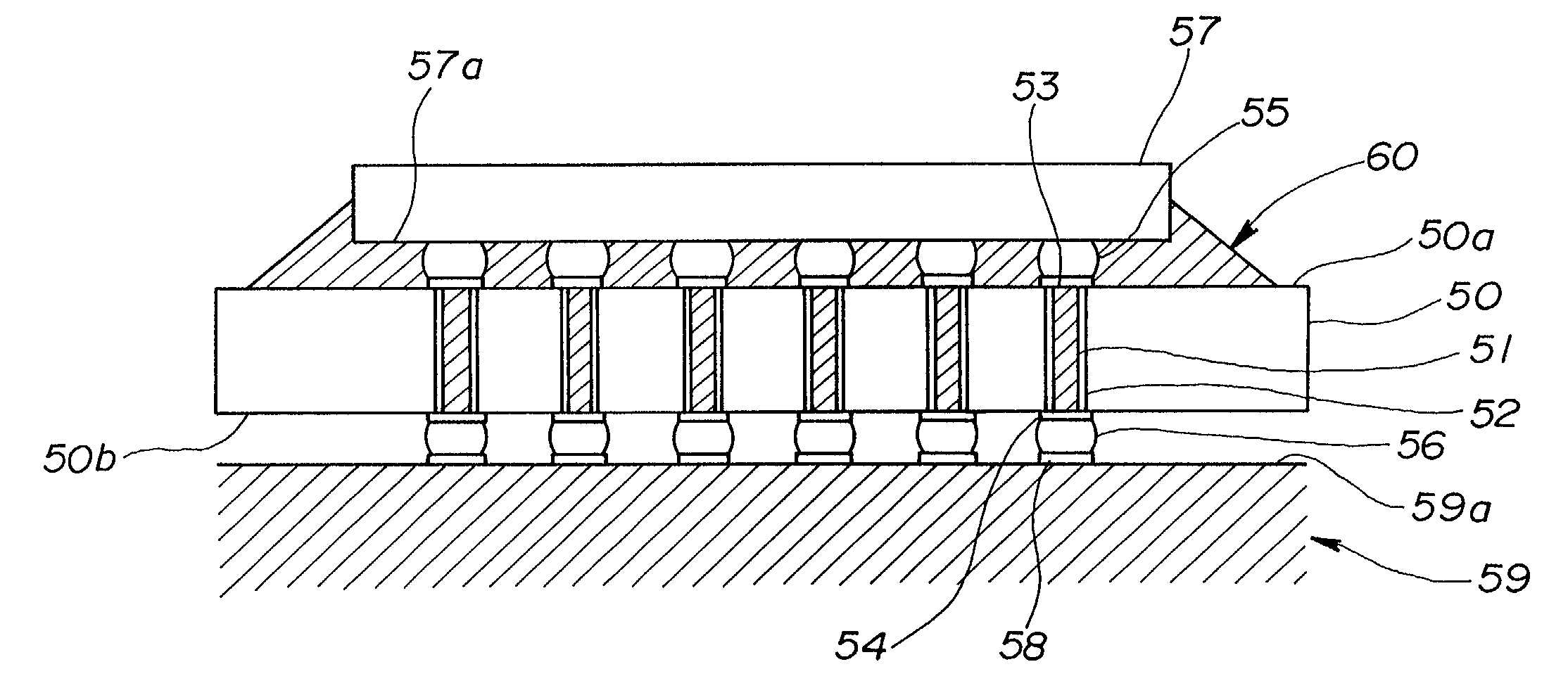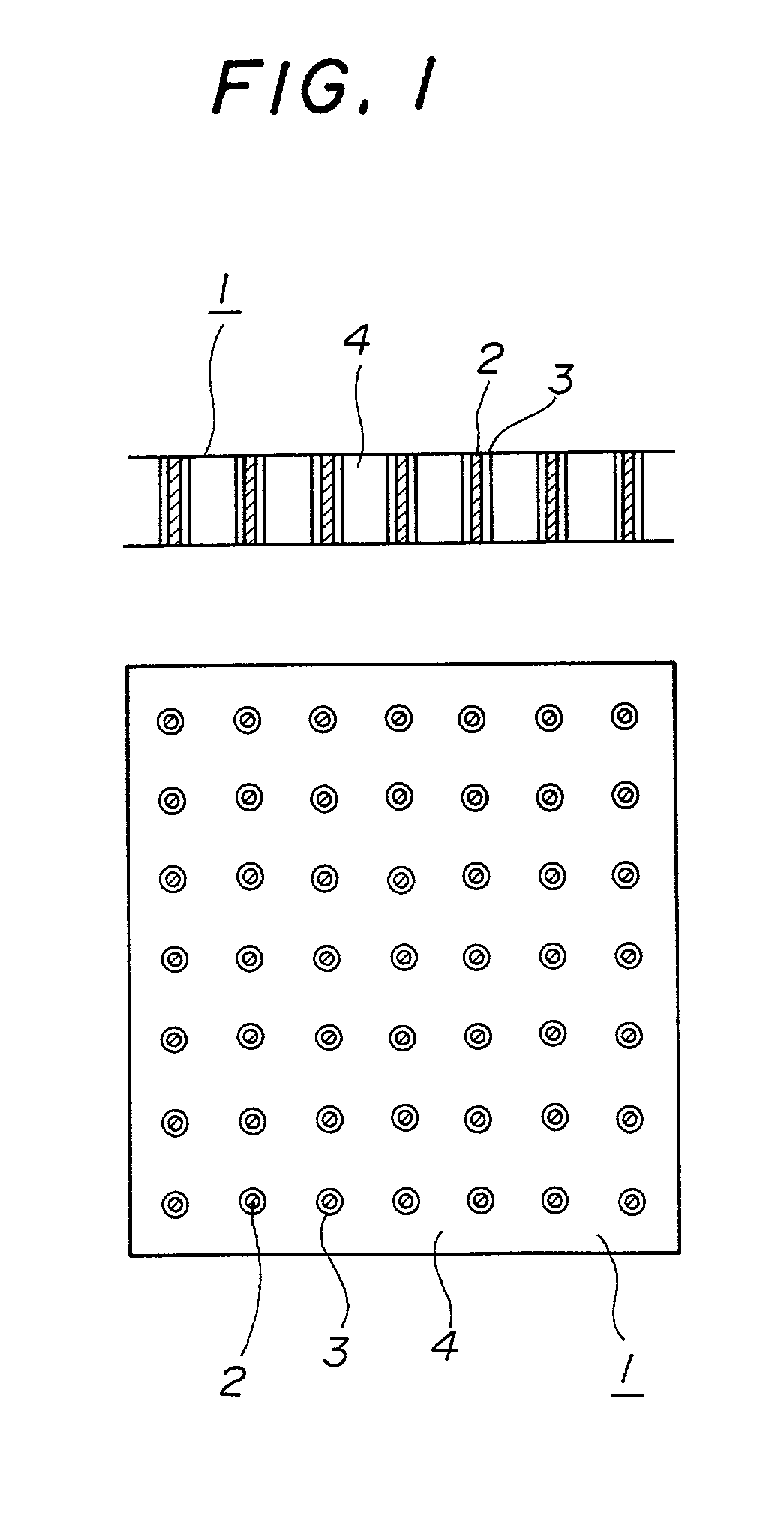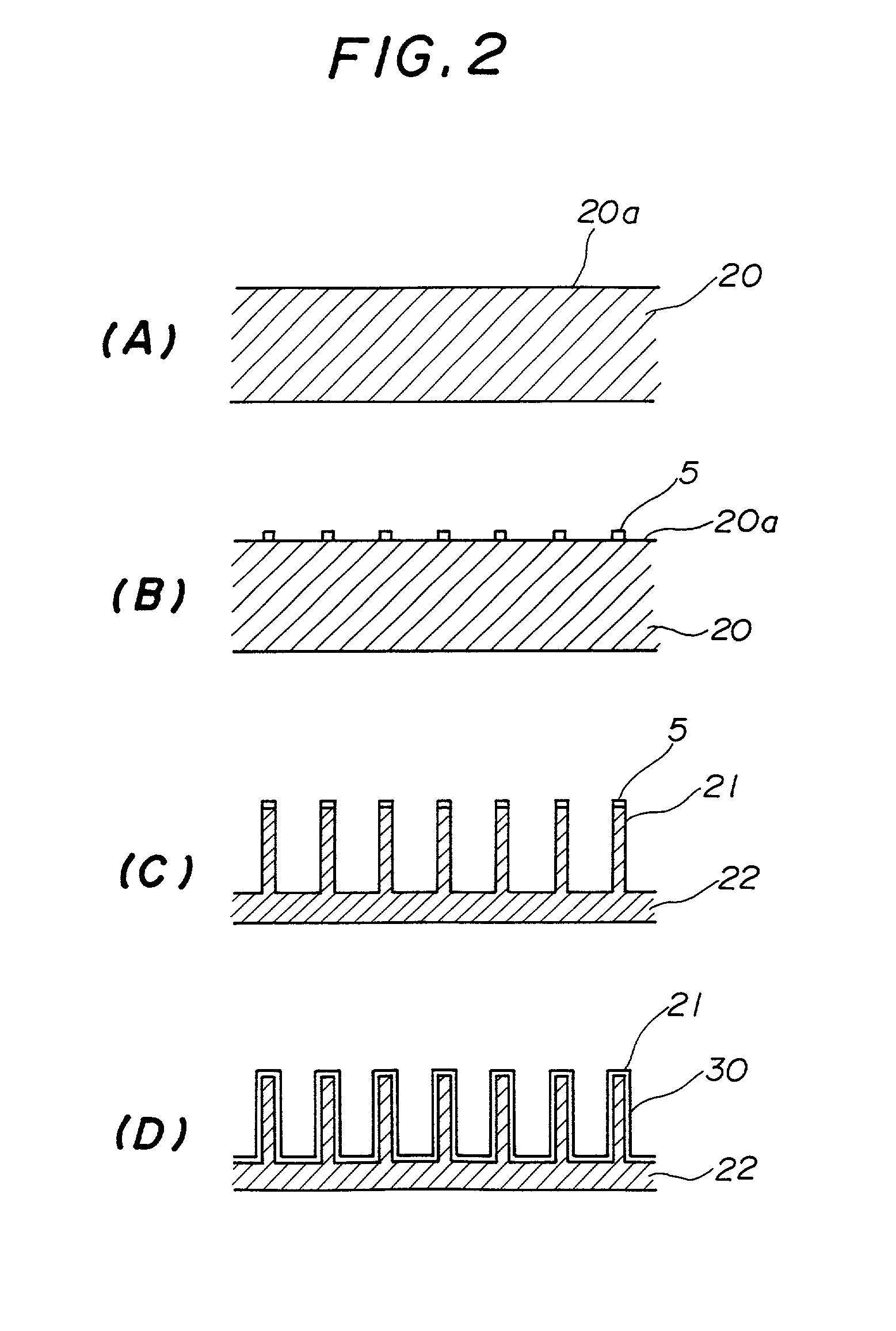Front-and-back electrically conductive substrate
a technology of electrically conductive substrate and front-and-back electrode, which is applied in the direction of printed circuit aspects, printed element electric connection formation, printed electric component incorporation, etc., can solve the problems of organic substrates with the same pitch, the pitch of through holes cannot be shortened, and the limit to the pitch of through holes. achieve the effect of enhancing the densities of integration
- Summary
- Abstract
- Description
- Claims
- Application Information
AI Technical Summary
Benefits of technology
Problems solved by technology
Method used
Image
Examples
first embodiment
[0059]A description will now be given of the present invention, with reference to the accompanying drawings.
[0060]FIG. 1 shows lateral cross-sectional and plan views of a front-and-back electrically conductive substrate according to a first embodiment of the present invention (hereinafter the first front-and-back electrically conductive substrate). Reference numeral 1 indicates a front-and-back electrically conductive substrate, reference numeral 2 indicates a post, and reference numeral 3 indicates an electrically conductive portion consisting of an electrically conductive film covering a vicinity of a post. The electrically conductive film may be selected as appropriate from among metals such as tungsten, molybdenum, platinum, gold, copper and the like, so long as the metal selected is an electrically conductive metal having a melting point that is higher than the baking temperature of a ceramic-type insulating material to be described later. Reference numeral 4 indicates an insul...
second embodiment
[0084]A description will now be given of a front-and-back electrically conductive substrate according to the present invention, with reference to FIGS. 6, 7 and 8 (hereinafter second front-and-back electrically conductive substrate).
[0085]The second front-and-back electrically conductive substrate is the same as the first front-and-back electrically conductive substrate described above, with the addition of anti-noise measures. The effective use of co-axial cable as an anti-noise measure is widely known. In other words, in a construction consisting of a wire core, insulating material wrapped around the wire core and a metallic coating that wraps around the insulating material, adjusting the dielectric constant of the insulation as well as the distance from the core wire to the metallic coating makes it possible to create a noise-resistant structure.
[0086]The second front-and-back electrically conductive substrate represents the application of the above-described thinking to through ...
third embodiment
[0100]A description will now be given of a front-and-back electrically conductive substrate according to the present invention, with reference to FIGS. 9 and 10 (hereinafter the third front-and-back electrically conductive substrate).
[0101]FIG. 9 is a first diagram showing lateral and plan views of a front-and-back electrically conductive substrate according to a third embodiment of the present invention. FIG. 10 is a second diagram showing lateral and plan views of a front-and-back electrically conductive substrate according to a third embodiment of the present invention. As can be appreciated, both diagrams show that the third front-and-back electrically conductive substrate is a substrate that, like the second front-and-back electrically conductive substrate, employs a coaxial through hole construction, essentially a variation of the through hole construction shown in the second front-and-back electrically conductive substrate.
[0102]The coaxial through holes formed in the second ...
PUM
| Property | Measurement | Unit |
|---|---|---|
| aspect ratios | aaaaa | aaaaa |
| aspect ratios | aaaaa | aaaaa |
| heights | aaaaa | aaaaa |
Abstract
Description
Claims
Application Information
 Login to View More
Login to View More - R&D
- Intellectual Property
- Life Sciences
- Materials
- Tech Scout
- Unparalleled Data Quality
- Higher Quality Content
- 60% Fewer Hallucinations
Browse by: Latest US Patents, China's latest patents, Technical Efficacy Thesaurus, Application Domain, Technology Topic, Popular Technical Reports.
© 2025 PatSnap. All rights reserved.Legal|Privacy policy|Modern Slavery Act Transparency Statement|Sitemap|About US| Contact US: help@patsnap.com



